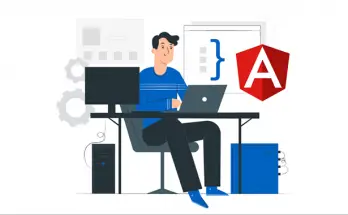Table of Contents
Are you into mobile app development and have already built multiple apps? If yes, you must have faced budget issues almost every time. It is not only because your development partners are incompetent, but because of numerous other issues. And when you are in the middle of the process, there is no stop button and you have to put extra money to complete the project.
Sounds familiar? So, have you ever thought what causes you to invest extra money? Yes, there are some hidden costs associated with mobile app development that we cannot ignore.
Categories of Hidden Costs
In order to understand it properly, you need to know about the mobile app architecture first. These are basically of four types:
- Functional services, including Push Notifications, SMS, etc.
- Infrastructure services, including CDN, servers, etc.
- Administrative services, including making updates to your app, managing users, etc.
- IT support services, including bug fixing, updating your app, etc.
You must be thinking, how would they be counted in hidden costs? So, let’s drill deeper without any further ado.
Functional Services
These services are required to perform the features and functionalities of your app. While developers may offer you with a specific functionality, it will not work until you subscribe to a service to give it a delivery mechanism. These services can cost hundreds or even thousands of dollars per month. Also, the number of such services, you may require, are countless. Have a look at these common examples:
Push Notifications
Estimated Annual Cost: $2,400
It is tough to imagine an app that does not use this important mobile capability. Push notifications enhance users’ engagement and entice the desired action, like purchase. To allow push notifications for a number of different devices (Android, iPhone, Windows Phone) you can definitely start with the free starting plan provided by Google's Firebase Cloud Messaging framework, however - depending on your App and user-base growth rate - you might eventually have to either increase your Firebase plan or switch to a multi-platform, high-level push notification service such as PushWoosh, PushCrew, UrbanAirship and the likes.
Social Media and Chat
Estimated Annual cost: $1,200
For encouraging your content sharing and upvoting, social media is crucial. If you wish social interaction in your app, you will probably need a subscription to a service such as one-to-one chat, bot integration, and group chat, offered by services such as SendBird and Applozic.
SMS
Estimated Annual cost: $500
To combine SMS messaging into your mobile app, you will need a service like Twilio.
Estimated Annual cost: $1,000
Integration of large-scale mail features with your mobile app will require transactional Email API services such as Sendgrid or Mailgun.
Infrastructure Services
These services consist of infrastructural components like where the data is stored and delivered, where the app is hosted, etc. Infrastructure services also need redundancies and load balancers for security and backup servers, adding complexities and costs.
Web Server
Estimated Annual cost: $1000 to $12,000 (depending on users)
Unless you're already equipped with a proper web farm you'll definitely need to outsource the hosting using a cloud-based service such as Google, Microsoft Azure or Amazon AWS. Alternatively, you can also use a low-cost managed or unmanaged Virtual Private Server (VPS) from hosting companies such as SolarVPS, Contabo and so on: such choice will most likely require some time and OS/networking experience, though, because you'll have to handle most of the security, data protection, routing and backup/DR aspects by yourself.
Data Storage
Estimated Annual Cost: between $100 and $3,600 (or more)
If your app will contain a lot of data, it will be important for you to choose where and how the data will be stored. A cloud storage service (and/or a CDN) will most likely solve most of your issues, also allowing your data processing to be compliant with the most recent Data Security and Data Protection requirements and regulations - such as the GDPR.
Development Accounts, Tools, Libraries and Support
Estimated Annual cost: $0 - $1,200 or more (up to $100.000)
If you're planning to just use open-source frameworks, you can easily skip these costs... As long as you're really sure you'll actually be able to do that. As a matter of fact, accessing most development tools could require additional investments in licenses: we're talking about services such as MobileFirst, Kony or Appcelerator, yet also about a lot of software libraries to deal with specific aspects (PDF or video generation/conversion, image or text manipulation, just to name a few). It's really important for you to get a good estimate of these expenses before committing into the app development phase.
Administrative Services
You will want an instinctive, accessible, effective, and user-friendly administration dashboard. These costs are difficult to anticipate because they largely depend on each app.
Here are some essential dashboard features:
Content Management
If you can modify a Word document, you should be capable to edit your app content too, which is must for your dashboard.
Dashboard Emulator
You must want to see the changes you make in your app before pushing them out live to the users’ community. Dashboard emulator helps you accomplish the same.
User Profiles
You will require a way for the management of users’ profile. Crucial details, such as password reset forms, sometimes get lost in the process of designing. However, a good designer won’t let it happen.
Data Segmentation
You will wish to classify users into several categories based on their profile, activities, and other parameters. It is needed for push notifications and messaging to users based on a particular segment.
IT Support Services
All of the above-mentioned services are not actually a part of app architecture, whereas technical support is a critical component for any app deployment and may account for a huge cost.
iOS and Android Updates
Estimated Annual cost: $10,000
Both platforms continuously release updates, each demanding maintenance. Most of the time doing that will mean a significant amount of development time in order to ensure backward-compatibility (for older devices) and/or forward-compatibility (for the new ones).
App Update Submissions
Estimated Annual cost: $600 - 2,400
No matter how streamlined and automated your deployment procedure is, you'll always require some sort of manual submission: renewing certificates, registering device identifiers, re-issuing provisioning profiles, and so on... There will be times when such activities will be a serious pain - and will also have a serious impact on your funds.
APIs
Estimated Annual cost: $500 to 2,000 (or more)
Each app generally has several third-parties APIs they interact with, specifically at the enterprise level. Modification in any of these will need periodic maintenance of your APIs.
Bugs, Tests and Troubleshooting
Estimated Annual cost: 10-20% of total development budget
There is no wonder that apps have bugs, but sometimes they go unfound for months or years, which can impact the performance of an app. Fixing a bug will require time, preventing them will require a good testing plan: you'll have to use your own people for the internal tests, yet also to hire external, independent parties to run some external tests. A great way to save time (and funds) would be to use a crowd-testing platform service such as MyCrowd, TestBirds, CrowdSourceTesting, Applause and the likes.
Conclusion
Building mobile apps can drain your finances. Complicated apps need a good security, long-term budgeting, and regular maintenance. A mobile app developer must take several factors into considerations before developing the mobile apps. These are just 4 key categories hidden costs of mobile application development, there are many more.
In case you're low on budged and you're looking for a cheaper alternative, you can consider to opt-out from the native App approach and develop either a Progressive Web App instead, by using one of the many client-side frameworks featuring a decent PWA support such as Angular, React or Vue.JS.
React Native apps are becoming increasingly popular among product owners and developers, because they can be pulled off with HTML5, JS, CSS and the easy-to-use React Framework (click here for a 5-minutes "Hello World" project sample using React JS and Visual Studio 2017): if you want to choose this path, you'll definitely need to hire a good React Native development company.



